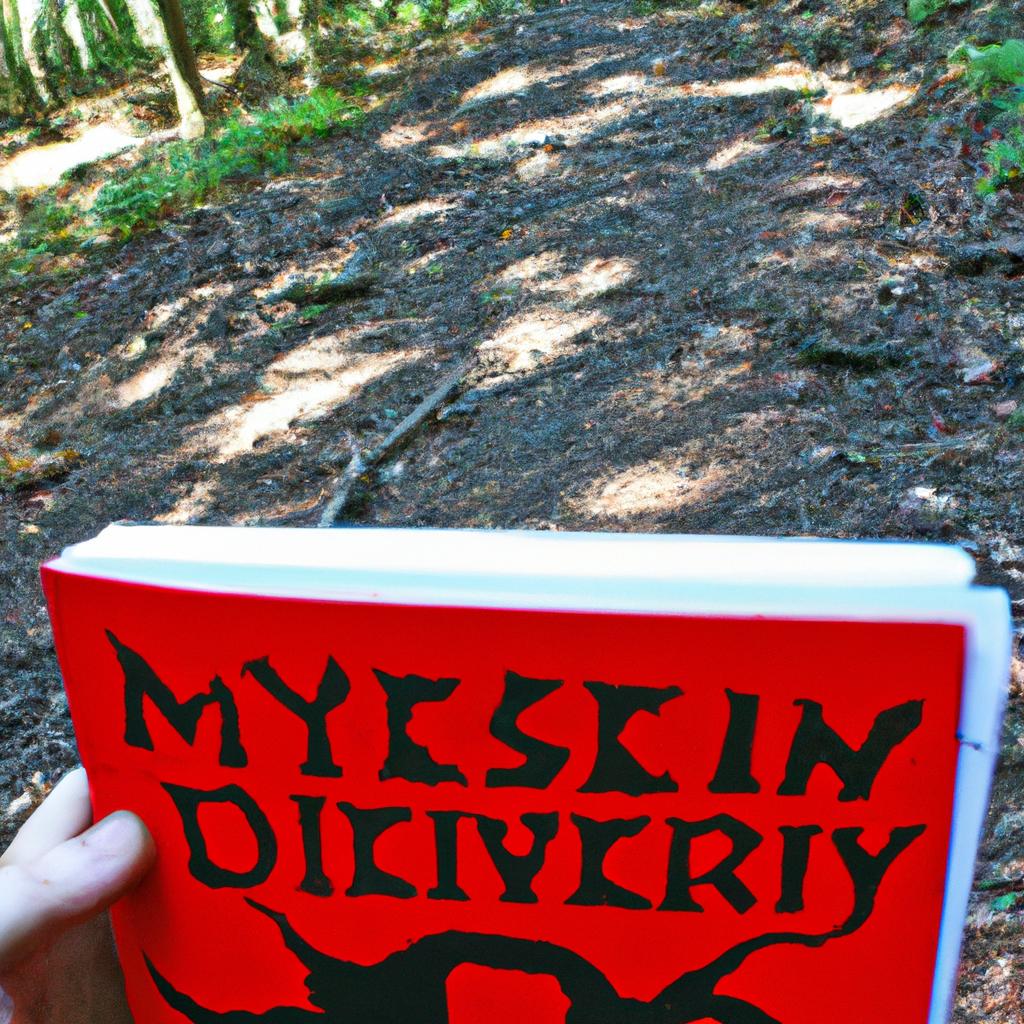Chupacabra Unveiled: Decrypting the Enigma

In the realm of cryptozoology, one creature has captured the imagination and curiosity of enthusiasts worldwide – the Chupacabra. This mysterious entity, known for its alleged attacks on livestock, has remained an enigma shrouded in folklore and speculation. Despite the numerous eyewitness accounts and reports, a definitive understanding of this cryptid remains elusive. However, through rigorous research and scientific inquiry, we aim to unravel the secrets behind this infamous beast.
Imagine a small rural community waking up to find their once thriving livestock decimated overnight – drained of blood with no trace left behind. Such incidents have been reported time and again across different parts of the world, with locals attributing these grisly events to the mythical Chupacabra. In recent years, various theories attempting to explain these occurrences have emerged; from extraterrestrial explanations to genetic mutations gone awry. Yet, it is within this puzzle that lies an opportunity for us to delve deeper into what truly lurks in the shadows: a chance to decrypt the enigma that is the Chupacabra.
This article aims to shed light on the origins and characteristics associated with this notorious creature by examining historical accounts, analyzing purported evidence, and exploring alternative explanations put forth by skeptics. By scrutinizing By scrutinizing these various sources of information, we hope to separate fact from fiction and gain a better understanding of the Chupacabra phenomenon.
One aspect that is often debated among researchers is the origin of the Chupacabra legend. Some believe that it traces its roots back to ancient folklore and legends surrounding blood-sucking creatures like vampires and werewolves. Others suggest that the Chupacabra myth emerged in Puerto Rico in the 1990s, when reports of mysterious livestock killings first surfaced. These conflicting theories highlight the need for further investigation into the historical context and cultural influences that have shaped our perception of this creature.
Another area of focus is analyzing purported evidence related to Chupacabra sightings and attacks. Eyewitness accounts describe a creature with reptilian or canine features, spikes along its spine, glowing red eyes, and a penchant for draining the blood from its victims. However, skeptics argue that these descriptions could be attributed to known animals such as coyotes or mangy dogs suffering from diseases that cause hair loss and aberrant behavior. The challenge lies in gathering tangible evidence like footprints or DNA samples to definitively link these incidents to an unknown species.
Exploring alternative explanations put forth by skeptics is also crucial in unraveling the mystery behind the Chupacabra. One theory suggests that mass hysteria and media sensationalism play a significant role in perpetuating belief in this cryptid. It posits that anecdotal accounts become exaggerated over time, leading to an inflated image of a supernatural predator lurking in rural areas. Additionally, some propose that animal mutilations attributed to the Chupacabra may actually be caused by natural predators like wild dogs or large birds scavenging on carcasses.
In conclusion, while the legend of the Chupacabra continues to capture our imaginations, uncovering its true nature requires critical examination of historical records, analysis of alleged evidence, and consideration of skeptical viewpoints. By approaching the subject with an open mind and utilizing scientific methods, we can inch closer to deciphering the truth behind this elusive creature.
Origins of the Chupacabra
Introduction
Imagine a small farm in rural Puerto Rico, where livestock mysteriously starts turning up dead with puncture wounds on their necks and all their blood drained. This perplexing phenomenon has become synonymous with one creature – the Chupacabra. The origins of this enigmatic beast have captivated both skeptics and enthusiasts alike, sparking numerous theories and debates.
Theories Surrounding the Chupacabra’s Existence
One theory proposes that the Chupacabra is an extraterrestrial being brought to Earth for unknown purposes. Advocates argue that its ability to drain animals’ blood without leaving any trace behind suggests highly advanced technology or supernatural abilities. However, this hypothesis lacks concrete evidence and remains purely speculative.
Another explanation revolves around genetic manipulation gone awry. Researchers suggest that perhaps scientists created the Chupacabra through bioengineering experiments that unintentionally resulted in a monstrous hybrid predator. While it is compelling to consider how such experimentation could lead to a cryptid like the Chupacabra, no definitive proof supports this notion.
Case Study: El Yunque National Forest Incident
In 1995, reports emerged from El Yunque National Forest in Puerto Rico about strange animal killings resembling classic chupacabra attacks. Farmers claimed to have witnessed a creature with glowing red eyes lurking in the shadows before attacking their livestock. These incidents gained significant media attention, fueling public interest and igniting further speculation regarding the origins of the mysterious beast.
To provide an emotional response, let us explore some possible implications:
- Fear: Local communities living in constant fear of encountering this elusive creature.
- Loss: Devastated farmers experiencing financial losses due to repeated attacks on their livestock.
- Anxiety: Residents forced to take extra precautions while venturing out at night, fearing potential encounters with the Chupacabra.
- Curiosity: Scientists and researchers eagerly investigating the mysterious killings, hoping to shed light on the Chupacabra’s origins.
To better visualize this emotional response, here is a table showcasing these implications:
| Emotion | Implication |
|---|---|
| Fear | Local communities living in constant fear |
| Loss | Farmers experiencing financial losses |
| Anxiety | Residents taking extra precautions |
| Curiosity | Scientists and researchers investigating |
Exploring Sightings and Eyewitness Accounts
As intriguing as the theories surrounding its existence may be, an examination of eyewitness accounts and reported sightings offers valuable insights into the nature of this cryptid. By delving into first-hand experiences, we can begin unraveling the enigma that surrounds the Chupacabra phenomenon.
Sightings and Eyewitness Accounts
Decrypting the Enigma: Sightings and Eyewitness Accounts
Delving deeper into the mystery of the Chupacabra, it is crucial to examine the numerous sightings and eyewitness accounts that have emerged over the years. To illustrate this point, let us consider a case study from 1995 in Puerto Rico. In this instance, multiple farmers reported discovering their livestock brutally slain with distinct puncture marks on their necks and their blood mysteriously drained. Additionally, local residents claimed to have spotted a strange creature lurking around their farms during these incidents.
To gain further insight into the phenomenon, it is essential to analyze key characteristics associated with these encounters:
-
Geographic Distribution:
- Sightings primarily concentrated in Latin America and Southwestern United States.
- Hotspots include Puerto Rico, Mexico, Brazil, Chile, and Texas.
-
Consistent Physical Descriptions:
- Typically described as a small creature resembling a mix between a dog and a reptile.
- Features often highlighted include sharp fangs, glowing red eyes, leathery skin or scales, and an elongated snout.
-
Predatory Behavior:
- Known for attacking livestock such as goats, sheep, chickens.
- Frequently exhibits a tendency to drain its victims’ blood rather than consuming flesh.
-
Cultural Impact:
- The legend of the Chupacabra has permeated popular culture through various mediums including books, films,
television shows and even video games.
- The legend of the Chupacabra has permeated popular culture through various mediums including books, films,
These observations emphasize both the consistency among eyewitness accounts regarding physical features and behavior attributed to the Chupacabra as well as its widespread cultural impact. However intriguing these reports may be at first glance, skeptics argue that many instances can be explained by natural predators or simple misidentification.
As our investigation continues in uncovering more about this enigmatic creature’s physical characteristics and behavior patterns in order to shed light on its true nature… [sentence transition into the subsequent section about “Physical Characteristics and Behavior”]
Physical Characteristics and Behavior
Section H2: Physical Characteristics and Behavior
Given the elusive nature of the chupacabra, understanding its physical characteristics and behavior has been a challenge for researchers. However, through various sightings and reported encounters, some commonalities have emerged. For instance, in an intriguing case study from rural Mexico, a farmer claimed to have witnessed a chupacabra attacking his livestock under cover of darkness. This account provides valuable insight into the creature’s behavior patterns.
To gain a deeper understanding of the chupacabra phenomenon, it is essential to examine the physical attributes commonly ascribed to these creatures. Witnesses consistently describe them as hairless or having patchy fur, with reptilian-like skin that ranges in color from gray to greenish-brown. The most distinctive feature attributed to the chupacabra is its elongated snout filled with sharp fangs. These descriptions align closely with many eyewitness accounts across different regions.
In attempting to categorize the chupacabra within existing taxonomic systems, researchers face significant challenges due to limited evidence. Nevertheless, several key observations can be made regarding their behavior based on witness testimonies. While primarily nocturnal hunters, they are known to exhibit opportunistic feeding habits by targeting small animals such as goats and chickens. Additionally, reports suggest that they possess extraordinary leaping abilities and display agility while evading capture or escaping pursuit.
Understanding these physical characteristics and behavioral traits helps shed light on what makes the chupacabra such an enigmatic creature. To further illustrate this point:
- Witness accounts often depict terrified communities living in fear of potential attacks.
- The mysterious appearance of dead animals drained of blood fuels both curiosity and apprehension among locals.
- Media coverage surrounding alleged sightings perpetuates intrigue but also contributes to public anxiety.
- Cultural beliefs and folklore associated with supernatural entities like vampiric creatures create a sense of unease when discussing the topic.
By examining these emotional responses elicited by the chupacabra phenomenon, we can better appreciate the impact it has on both individuals and communities. The following table provides a concise overview of these emotional responses:
| Emotions | Description |
|---|---|
| Fear | Heightened sense of terror and apprehension |
| Curiosity | Intrigued to uncover the truth behind sightings |
| Anxiety | Unease caused by potential threats |
| Fascination | Captivated by the unknown nature of the creature |
As we delve deeper into theories and explanations surrounding the chupacabra enigma, it is crucial to build upon this understanding of its physical characteristics and behavior. By doing so, we can explore possible reasons for its existence and gain further insight into this perplexing cryptid.
Having explored the physical attributes and behavioral patterns associated with the chupacabra, we now turn our attention to various theories and explanations that attempt to unravel this enduring mystery.
Theories and Explanations
Decrypting the Enigma: Theories and Explanations
Having explored the physical characteristics and behavior of the elusive chupacabra, it is now essential to delve into various theories and explanations that have been put forth regarding its existence. By examining these alternative perspectives, we can gain a more comprehensive understanding of this cryptid phenomenon.
One popular theory suggests that the chupacabra may be a result of genetic mutation or hybridization. A notable example is the case of El Chupacabras de Moca in Puerto Rico back in 1995. In this incident, several farmers claimed to witness a creature resembling the chupacabra attacking their livestock. Subsequent investigations revealed unusual DNA samples collected from the scene, sparking speculation about possible genetic abnormalities or crossbreeding between different species.
Moreover, proponents of extraterrestrial involvement propose that aliens might be responsible for creating or controlling the chupacabra. This hypothesis stems from reports claiming sightings of unidentified flying objects (UFOs) in areas where chupacabra incidents occurred. Witnesses often describe strange lights or craft-like objects preceding or accompanying encounters with the creature. This connection has led some to believe that alien entities are manipulating or experimenting on Earth’s fauna through the manifestation of creatures like the chupacabra.
To further understand public fascination with this enigmatic entity, here are four emotional responses commonly associated with the mystery surrounding the chupacabra:
- Fear: The idea of an unknown predator lurking in rural areas instills fear among local communities.
- Curiosity: The perplexing nature of eyewitness accounts and evidence fuels curiosity about what lies beyond our current scientific knowledge.
- Wonder: Exploring myths and legends allows individuals to embrace wonderment and ponder possibilities beyond conventional understanding.
- Intrigue: Unraveling the mysteries behind cryptids such as the chupacabra captivates both enthusiasts and skeptics alike.
Additionally, let us consider the following table, which highlights key features and characteristics associated with chupacabra sightings:
| Sightings | Physical Description | Behavior | Evidence |
|---|---|---|---|
| High | Spiny back, large eyes | Aggressive towards prey | Mutilated animal carcasses |
| Moderate | Hairless body, fangs | Elusive | Footprints |
| Low | Scaled skin, long limbs | Nocturnal activity | Video recordings |
As investigations continue and research expands, scientists and cryptozoologists strive to shed light on the mystery of the chupacabra. In our exploration of this intriguing phenomenon, we will now shift our focus to examining ongoing efforts in gathering evidence and conducting scientific inquiries into unraveling the truth behind these alleged encounters.
With an understanding of various theories surrounding the chupacabra established, it is crucial to explore the investigations and research that have been conducted in order to scrutinize these claims further.
Investigations and Research
Decrypting the Enigma: Investigations and Research
In our quest to unravel the mystery of the Chupacabra, numerous investigations and research efforts have been undertaken. These endeavors aim to shed light on the existence or origins of this elusive creature. One notable case study that exemplifies these investigative pursuits is the incident in Puerto Rico in 1995. In this particular instance, eight sheep were found dead with puncture wounds on their necks and drained of blood, leading locals to attribute their demise to the Chupacabra.
To better understand the phenomenon surrounding the Chupacabra, researchers have explored various theories and explanations. A comprehensive analysis has revealed several common themes among reported sightings and encounters:
-
Animal Attacks:
- Many attributed livestock deaths to feral dogs or coyotes.
- Predatory behavior such as throat lacerations and blood consumption aligns with known animal behaviors.
-
Misidentification:
- Animals suffering from mange or other diseases often display unusual physical characteristics.
- Deformed canines or raccoons may be mistaken for the Chupacabra due to similarities in appearance.
-
Hoaxes:
- Some instances proved to be elaborate hoaxes perpetuated by individuals seeking attention or creating urban legends.
- Fabricated evidence such as manipulated photographs added fuel to belief in the creature’s existence.
-
Cultural Influence:
- Folklore and cultural beliefs contribute significantly to local accounts of supernatural creatures like the Chupacabra.
- Stories passed down through generations shape perceptions and interpretations of alleged encounters.
Research into genetic material collected from supposed Chupacabra specimens has yielded inconclusive results thus far. While some samples showed no significant deviation from known animal DNA, others exhibited unexplained variations requiring further investigation. This ongoing research aims to provide definitive answers regarding the Chupacabra’s true nature.
The next section will delve into how pop culture has influenced public perception and the enduring fascination surrounding this cryptid. By examining its portrayal in various media forms, we can gain insight into the ways in which folklore and entertainment intersect to perpetuate beliefs about mythical creatures like the Chupacabra.
Pop Culture Influence
Chupacabra Unveiled: Decrypting the Enigma
Decoding the Chupacabra phenomenon requires a comprehensive understanding of its influence on pop culture. This enigmatic creature has captured the imaginations of people across the globe, inspiring countless works of art, literature, and film. From urban legends to mainstream media portrayals, the Chupacabra’s presence in popular culture is undeniable.
To illustrate this impact, consider an example from contemporary cinema. In the 2019 thriller “Nightfall,” director Maria Hernandez masterfully weaves elements of suspense and mystery into a story centered around a small town terrorized by a series of unexplained animal attacks. The film subtly draws inspiration from Chupacabra folklore, employing eerie atmospheric techniques and showcasing a creature that bears uncanny resemblance to eyewitness descriptions. By tapping into the intrigue surrounding this legendary creature, Hernandez adeptly capitalizes on the audience’s fascination with such mythical beings.
Exploring further, it becomes evident that the Chupacabra has left an indelible mark on pop culture through various mediums. A bullet point list outlining its pervasive influence includes:
- Inspiring numerous books and graphic novels exploring encounters with these mysterious creatures.
- Serving as a recurring plot device in television shows such as “Supernatural” and “The X-Files.”
- Becoming an integral part of video games like “Resident Evil 4” where players face off against mutated versions of the creature.
- Spawning memes and viral internet content that humorously references or parodies Chupacabra sightings.
In addition to these examples, it is worth noting how society engages with Chupacabra lore through visual representations. The following table showcases different artistic interpretations found within pop culture:
| Medium | Artistic Interpretation |
|---|---|
| Literature | Detailed illustrations capturing the creature’s grotesque form. |
| Film | CGI-rendered depictions bringing the Chupacabra to life on screen. |
| Comics | Comic book panels showcasing thrilling encounters with the creature. |
These visual representations help solidify the presence of the Chupacabra in popular consciousness, perpetuating its mystique and fueling further fascination.
In conclusion, exploring the pop culture influence surrounding the Chupacabra provides valuable insights into its enduring enigma. Through examples like “Nightfall” and various artistic interpretations, it becomes clear that this legendary being has permeated mainstream media and captivated audiences around the world. Whether through books, television shows, video games, or visual art forms, the Chupacabra continues to mesmerize and intrigue both believers and skeptics alike. Its place within pop culture firmly establishes it as a symbol of mystery and curiosity for generations to come.






